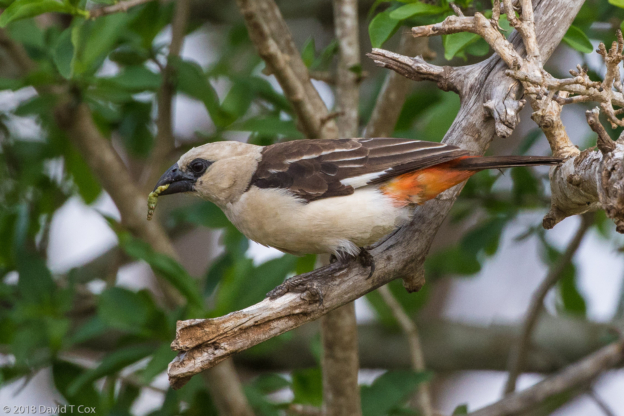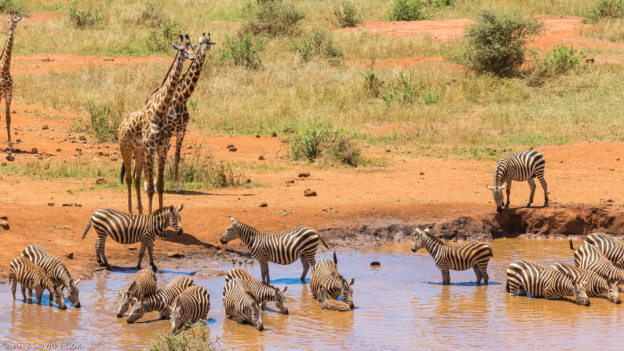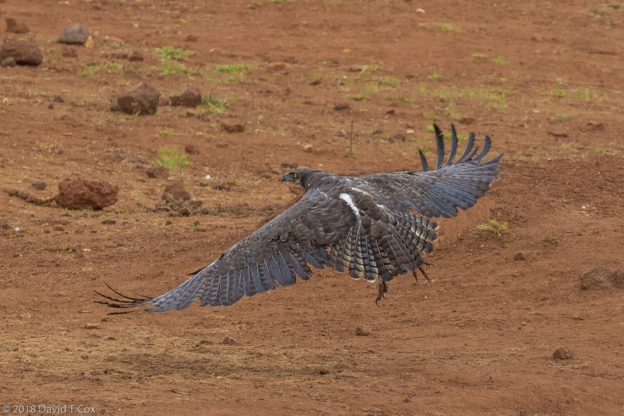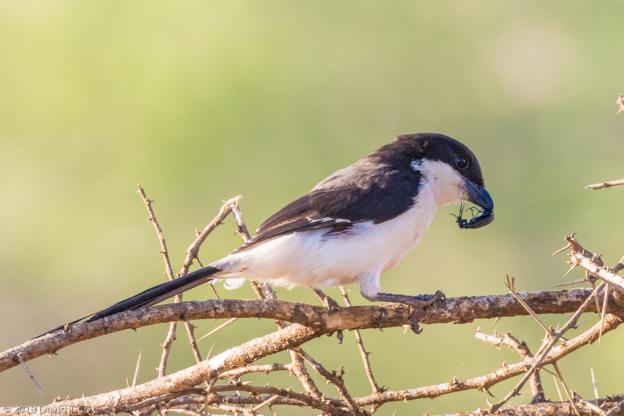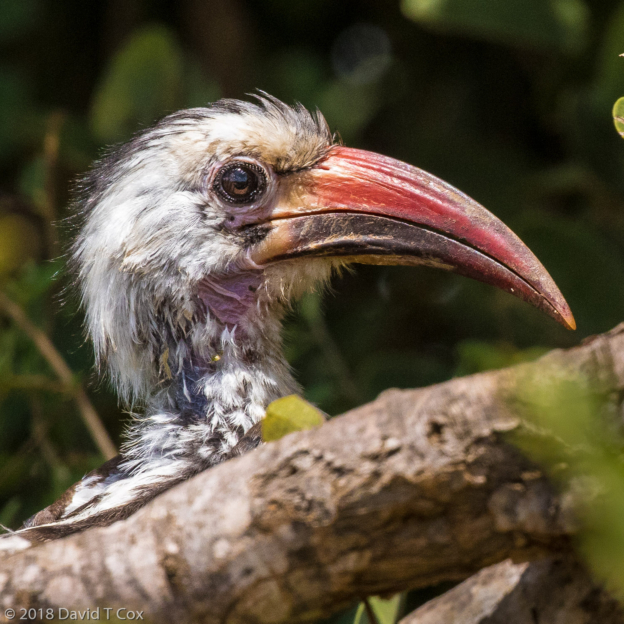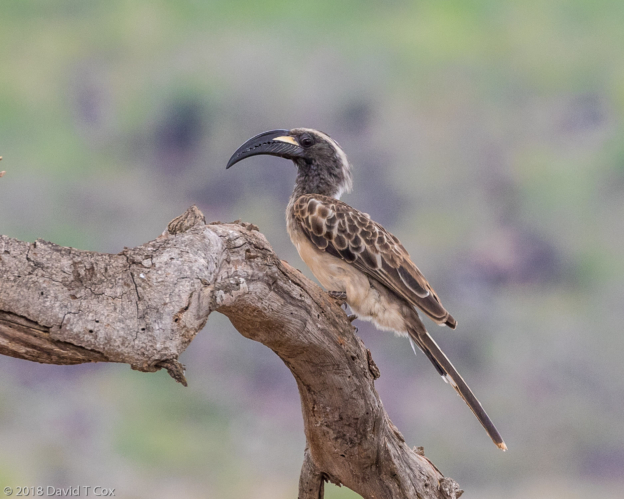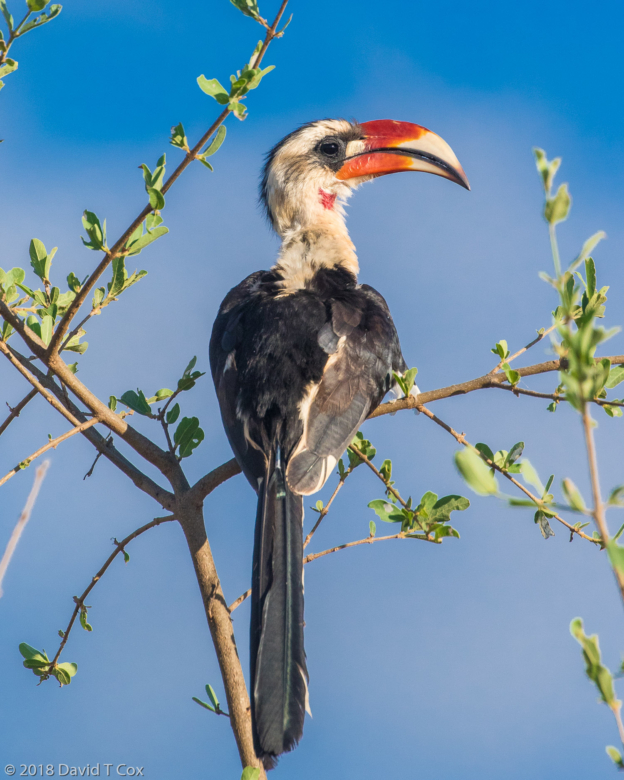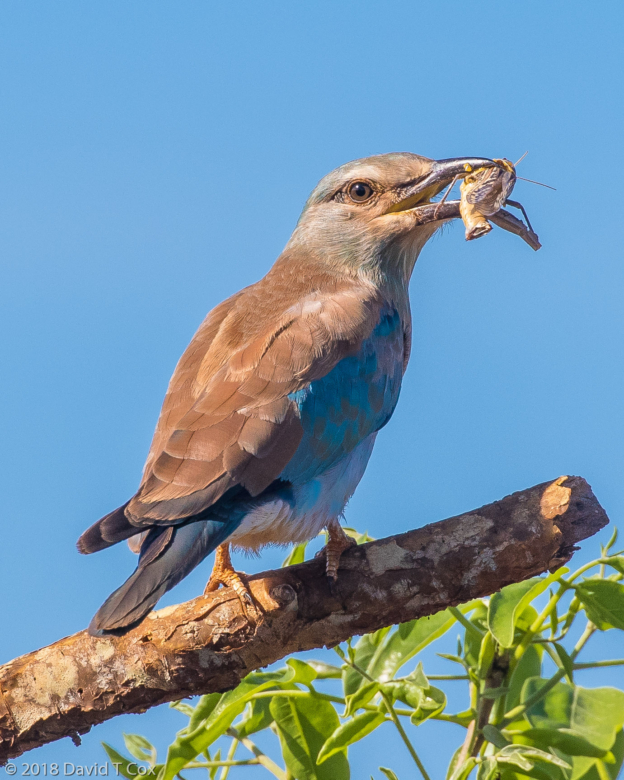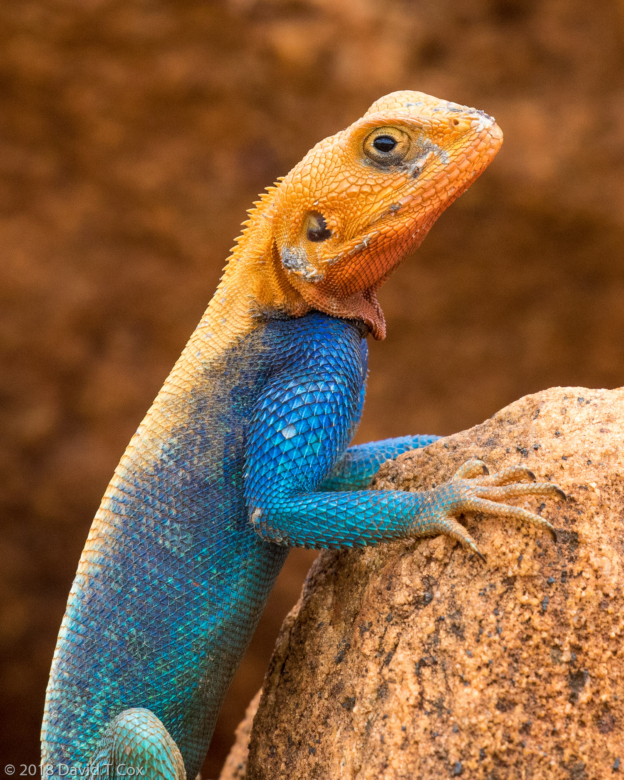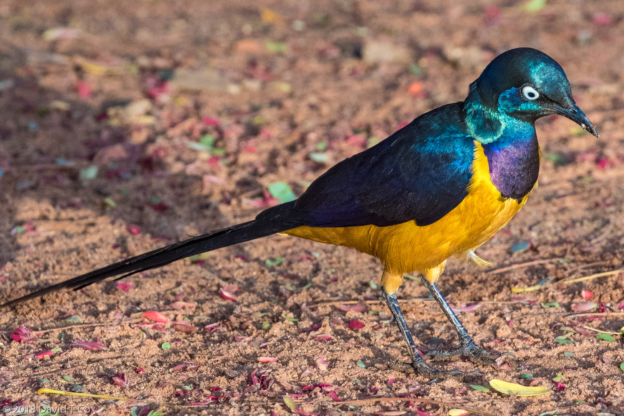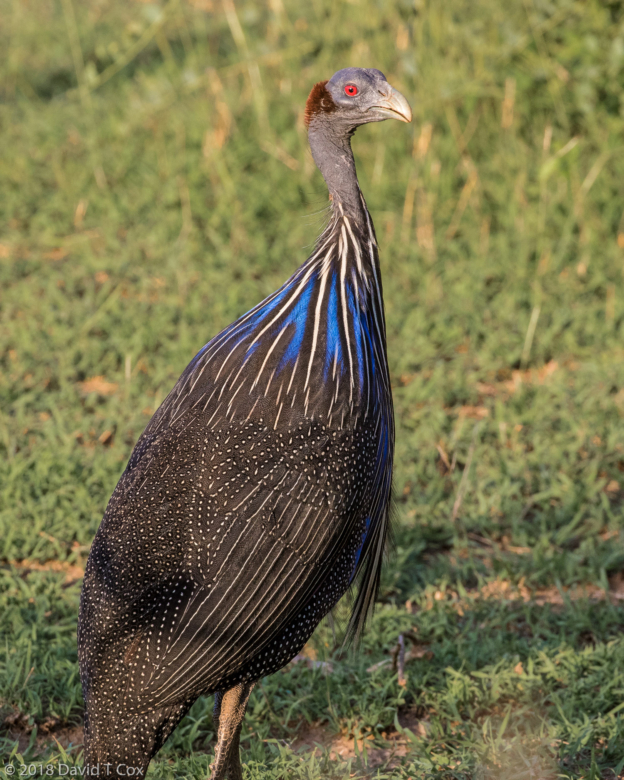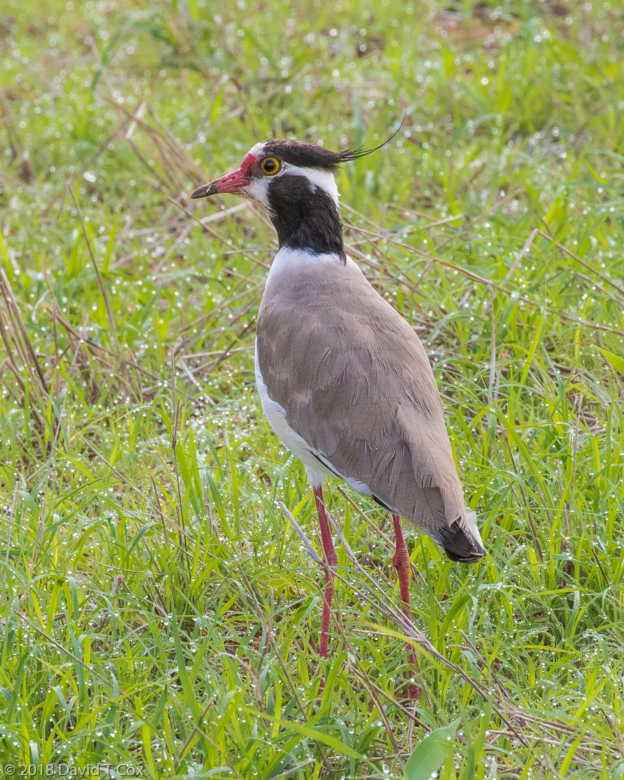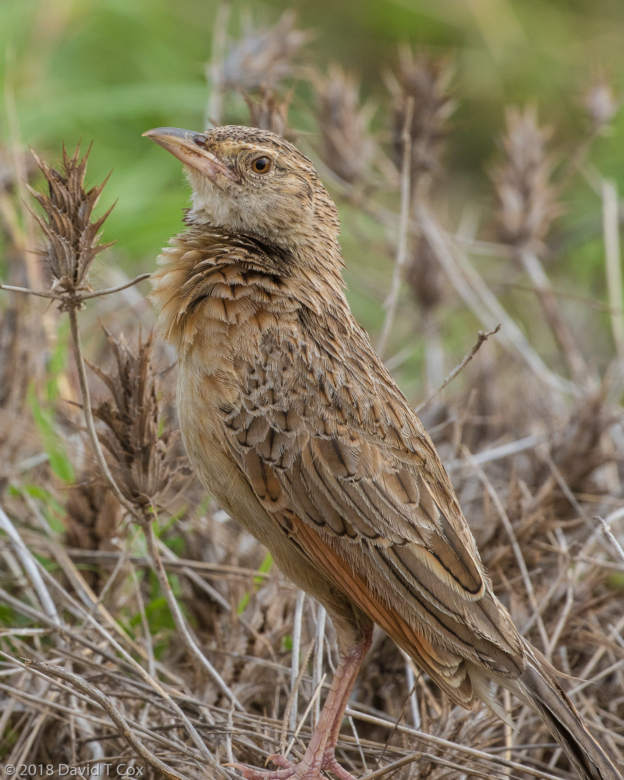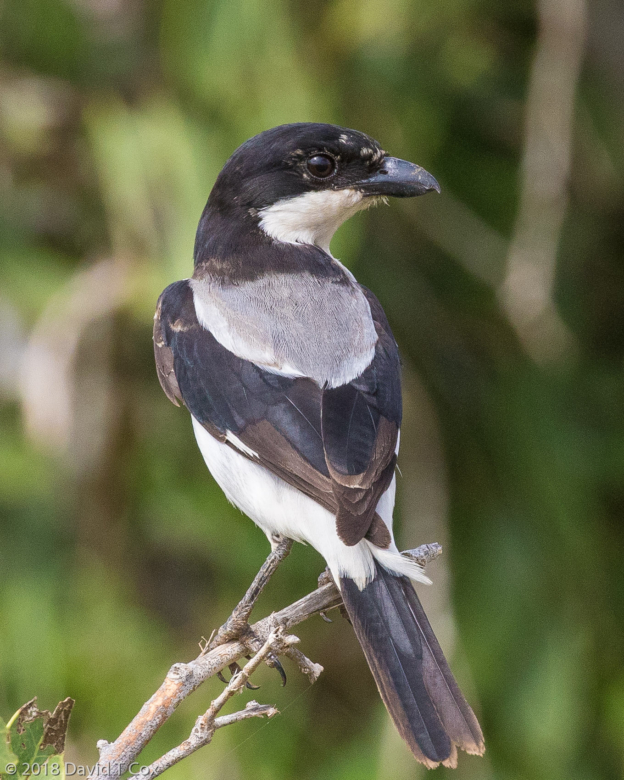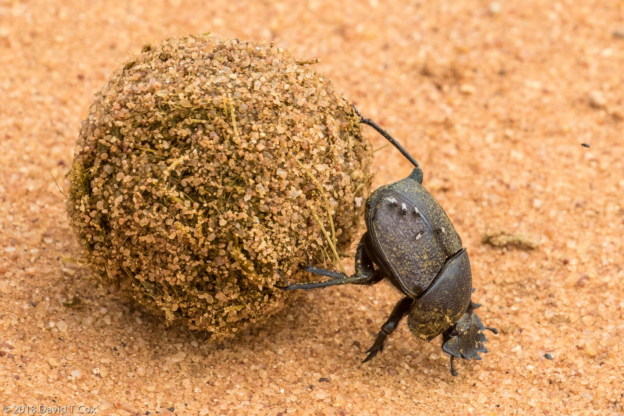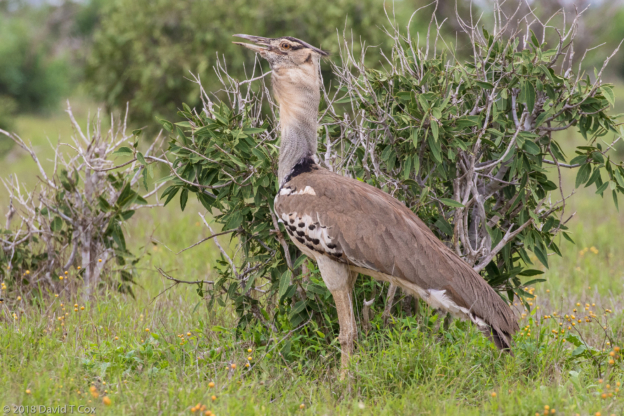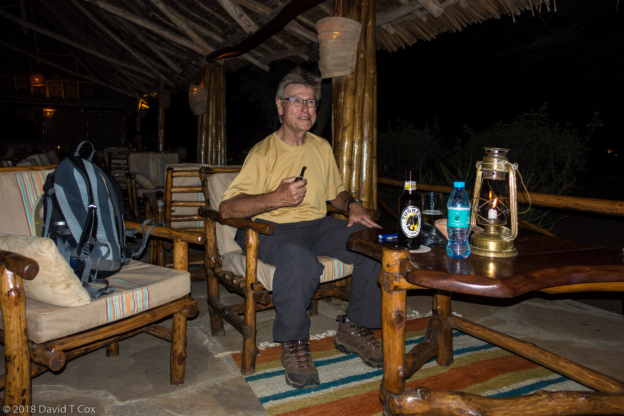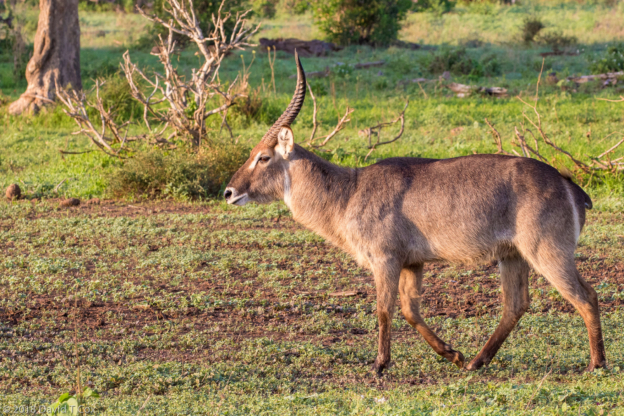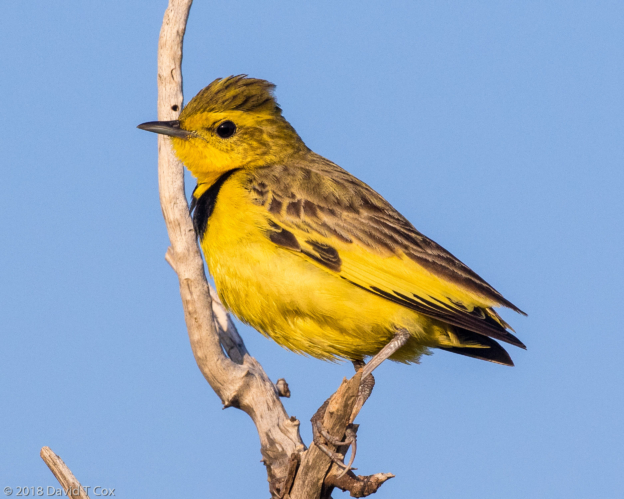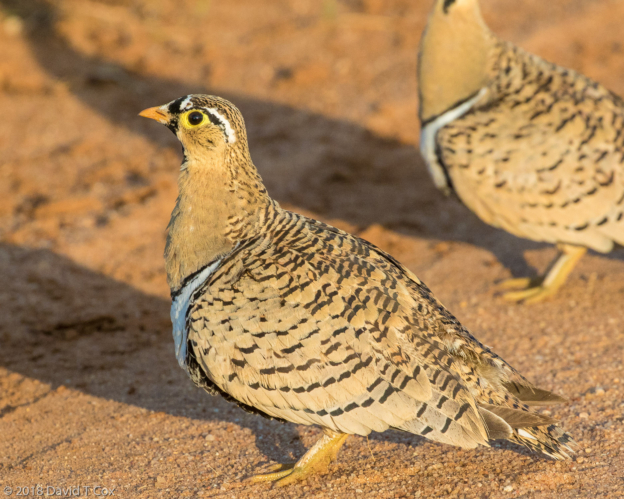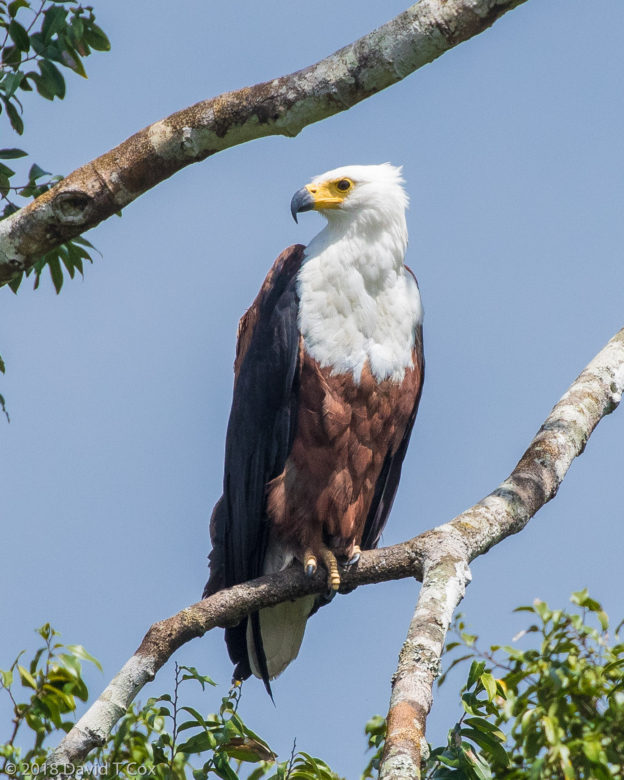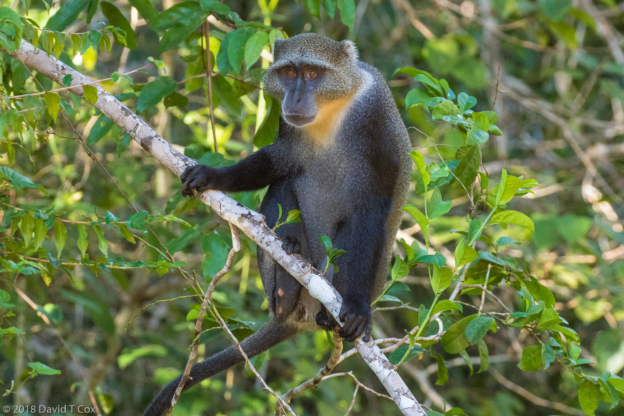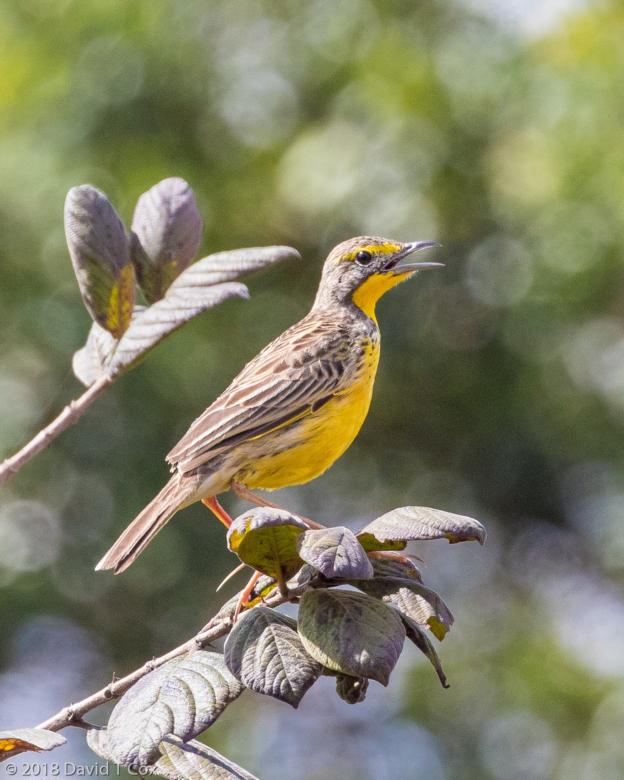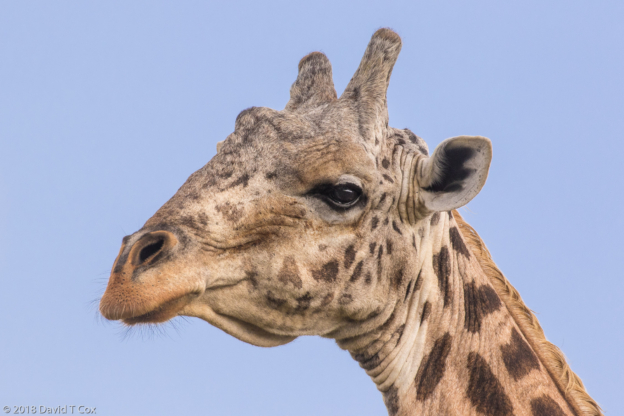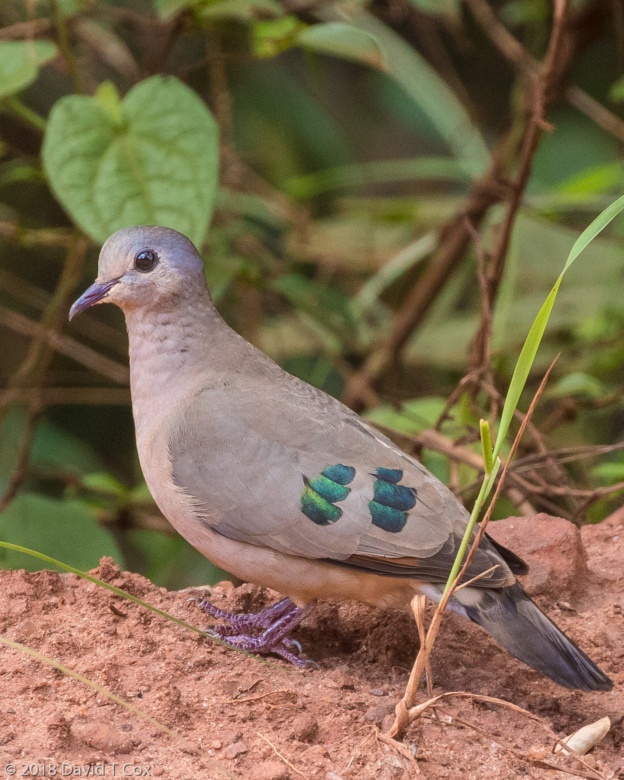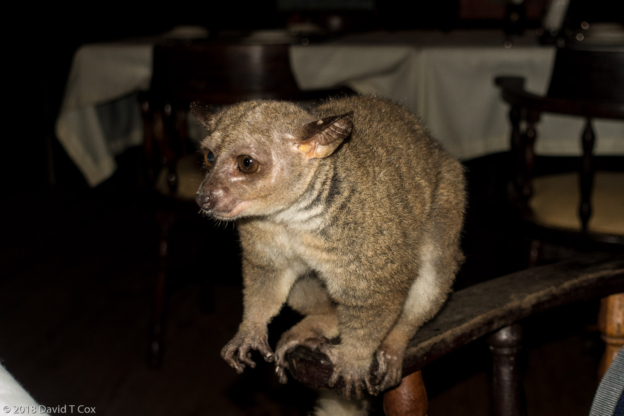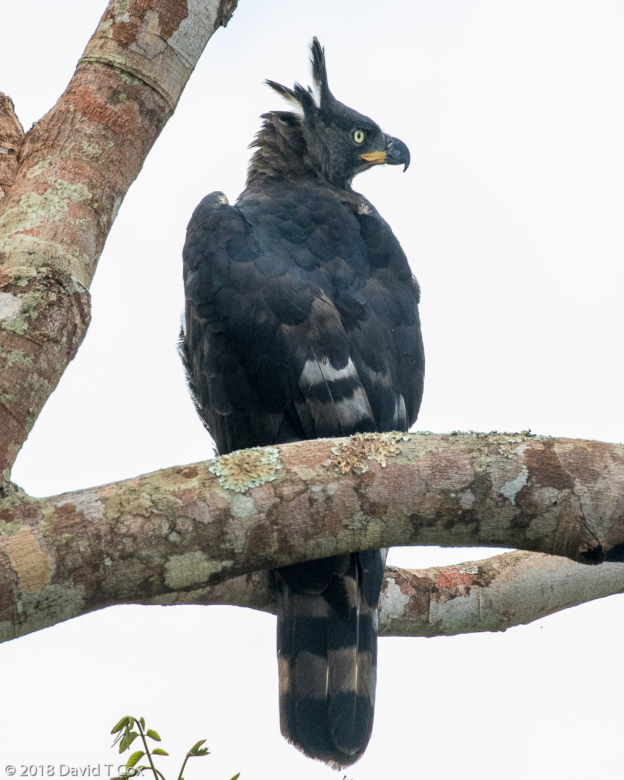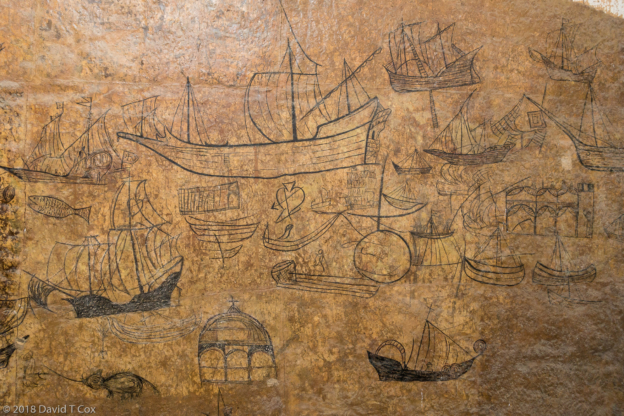All Photos Are Below the Travelogue Text
Click on Any Photo To Open Slide Show
To print the travelogue, right click anywhere on the page. Choose "Print" from your browser dialog box. You can choose Save to PDF in the browser print window.
Share your thoughts.
Email Dave - coxdavid55@hotmail.com
We drove from Amboseli, on the northern flanks of Mt Kilimanjaro, south and east to Tsavo West National Park. There I stayed in the wonderful Serena Lodge inside the Park. My room, No. 14, was on the second floor directly overlooking two large water holes where I counted at least 10 different species of mammals which came to drink, both during the day and all night. Large families of African Elephants would wade into the waters, followed by herds of Zebra, Impala, Waterbuck and Giraffe. Occasional Buffalo and Black-backed Jackal also frequented the water along with Yellow Baboons. Outside my room I had orange-headed Agami Lizards. We drove game drives every morning where I picked up a number of interesting birds, including the Black-faced Sandgrouse and 4 species of hornbill – the Eastern Yellow-billed, Red-billed, African Grey and Von der Decken’s.
From Tsavo West we drove further south and east to the Tsavo East National Park, with pretty rolling forested hills but far less animal and birdlife. The Park is famous (or, infamous) for its pair of Man-eating Lions; back in the 1890’s the railroad was constructed from Mombasa, the main seaport on the East coast of Africa, to Uganda. Apparently 30 to 100 Indian workmen were stalked, killed and eaten by a lion pair during bridge construction, causing many workers to flee the area. A British soldier finally killed the lions, which now are on display in the Chicago Field Museum. Man-eating among lions is almost unknown, but this history gives the area quite a mystique. Satao Camp was a tented camp, so once again I was in a semi-luxurious huge tent bedroom, with large bath area, and insect netted openings on all sides. Here the nearby waterhole was further away, but every evening just after sunset the Hippos would exit the water and march slowly by my tent, which was well away from the dining – registration area. Guests had to be escorted to and from the tents when dark, as the hippos are the most dangerous animals in the country. I found here the beautiful Golden-breasted Starlings, and the super-strange looking Vulturine Guinea Fowl with huge dazzling bodies of electric-blue and silver stripes, pencil thin high necks which become completely devoid of feathers near the head, except for a ring of rust-red fluff around the back, and a small head with barren black skin and beak. The head does for all-the-world resemble that of a vulture.
From Tsavo East we traveled to the Shimba Hills Conservancy south of Mombasa, where I spent two days in the lovely Shimba Hills Lodge, overlooking a small stream and pond, both ruled over by a gorgeous pair of immense African Fish Eagles. The eagles were visible at all hours of the day, sitting on high branches of trees on all sides of the pond, and often loudly crying as they would simultaneously swoop to the pond, passing each other and ritualistically exchanging the tree branches they sat on. Strange behavior, but fascinating to watch. Unfortunately, the Shimba Hills, although beautiful forested hills, contain very few birds and very few species of birds. The one ranger I spoke with told me the Park had 111 species – this is less than half the number of species we have just around my desert town of Tucson, and as Kenya has more species of birds than any country in Africa I simply cannot understand the dearth of birds in this area.
While dining, overlooking the small lake, we entertained food beggars, both at noon and evening meals; noon produced a bushy orange and grey squirrel which would come under our chairs looking for intentionally dropped food. Evenings we were visited by a Bush-baby, one of the nocturnal primates of Africa – this one would not just beg, but climb the outer railing by the table or an empty chair and steal food off the table. I lost a roll the first evening, and barely managed to salvage an egg roll the second.
Wednesday morning I left early to take care of a nagging problem I have had since arrival; Kenya has for years provided 90 day tourist visas upon arrival, but the week before my return from Madagascar the Director of Immigration issued a directive reducing all such visas to 30 days, and requiring a return to an Immigration office near the end of that period for any extension; my total time is 44 days. I tried but could not convince management in the Nairobi main office to grant me an extension while I was there just days after the visa was issued. It looked like I would have to break my safari travel for a day or more while in the West of Kenya to return to Nairobi just to get the extension. I had my driver leave early and traveled to the Mombasa Immigration Office Wednesday morning, where the lone officer, after reviewing my flight tickets for returning to the US, granted me an extension of 14 days to extend my visa to my departure date. This now leaves me worry free to enjoy the balance of my safari travel to the north and west of the country.
The Mombasa hotel I had booked months in advance had me wait a couple of hours for room cleaning, then the manager told me they had no rooms available as they had unexpectedly agreed to house an entire German Delegates meeting which required special security. They booked me in another hotel for which I had to pay twice as much and endure a location much further from the Old Town for which I had come to Mombasa – basically the Voyager Resort comprises a beach and pool destination for Eastern Europeans and wealthy Kenyan families with little kids. Oh well, the food was good and the ocean view terrific.
Mombasa has the major seaport of East Africa; it was visited by the earliest Portuguese explorers, starting with Vasco da Gama in 1498. In the 1590s the Portuguese built the huge Fort Jesus (now a World Heritage Site) to protect the port. Nevertheless, control of Mombasa has changed at least 9 times. For long periods Mombasa, along with Zanzibar, were under the control of Oman or Omanis in Mombasa. For centuries it was the major African seaport for trade in spices, gold, ivory and slaves. I visited the Fort Friday morning, traveling there by the wonderful tuktuks (3 wheel motorized taxi bikes) which ply the city’s narrow alleys, and break every decent traffic law – if there are such laws. A highlight of the Fort was walls with intricate drawings (graffiti) left by Portuguese sailors around 1600 – most are of various types of ships and boats.
Saturday I returned by air to Nairobi for two nights, again in the Meridian Hotel, after which I start the long stretch of my safari, going north and west for a total of 21 days, visiting 10 different Parks and Reserves. Later. Dave
- Mt Kilimanjaro from Sopa Lodge, Amboseli NP, Kenya
- Plains Zebra and Giraffe at water hole, Kilaguni Serena Lodge, Tsavo West NP, Kenya
- Martial Eagle at waterhole, Kilaguni Serena Lodge, Tsavo West NP, Kenya
- Long-tailed Fiscal with beetle, Tsavo West NP, Kenya
- Eastern Yellow-billed Hornbill, Tsavo West NP, Kenya
- Red-billed Hornbill, Tsavo East NP, Kenya
- African Grey Hornbill, waterhole, Kilaguni Serena Lodge, Tsavo West NP, Kenya
- Von der Decken’s Hornbill, Tsavo West NP, Kenya
- Eurasian Roller imm. with large grasshopper, Tsavo West NP, Kenya
- Orange-headed Agami Lizard, Tsavo East NP, Kenya
- Golden-breasted Starling, Tsavo East NP, Kenya
- Vulturine Guineafowl, Tsavo East NP, Kenya
- White-bellied Bustard, Tsavo East NP, Kenya
- White-headed Buffalo Weaver with green caterpiller, Tsavo East NP, Kenya
- Black-headed Lapwing, Tsavo East NP, Kenya
- Red-winged Lark, Tsavo East NP, Kenya
- Taita Fiscal, Tsavo East NP, Kenya
- Dung Beetle rolling Elephant dung, Tsavo East NP, Kenya
- Kori Bustard, Tsavo East NP, Kenya
- Dave at bar at Satao Camp, Tsavo East NP, Kenya
- Water Buck, Tsavo East NP, Kenya
- Golden Pipit, Tsavo East NP, Kenya
- Black-faced Sandgrouse, Tsavo East NP, Kenya
- African Fish Eagle, Shimba Hills Lodge, Kenya
- Gentle Monkey complex aka Syke’s Monkey aka White-throated, Shimba Hills NP, Kenya
- Yellow-throated Longclaw, Shimba Hills NP, Kenya
- Giraffe, Shimba Hills NP, Kenya
- Emerald-spotted Wood Dove, Shimba Hills NP, Kenya
- Small-eared Galago, aka Bush Baby, ready to steal food, Shimba HIlls Lodge, Shimba Hills NP, Kenya
- Long-crested Eagle, Shimba Hills NP, Kenya
- Portuguese sailor’s wall paintings, Fort Jesus, 16th C Portuguese, Mombasa, Kenya
To print the travelogue, right click anywhere on the page. Choose "Print" from your browser dialog box. You can choose Save to PDF in the browser print window.
Share your thoughts.
Email Dave - coxdavid55@hotmail.com
